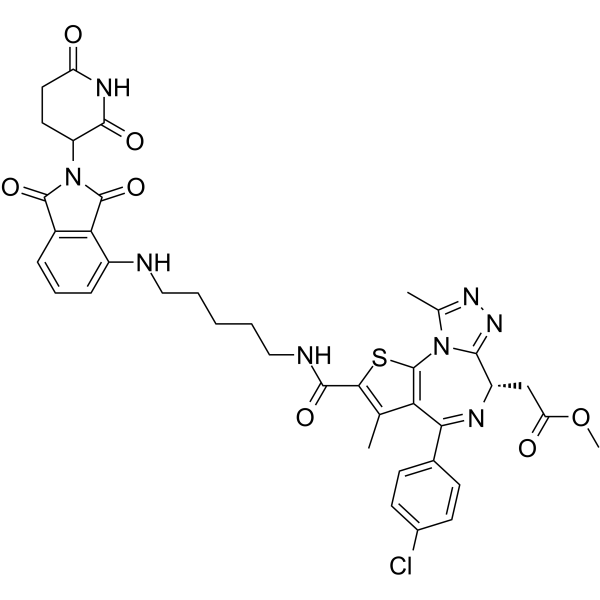PROTAC
PROTACs or Proteolysis Targeting Chimeric Molecules are heterobifunctional nanomolecules that theoretically target any protein for ubiquitination and degradation. In terms of the structure, PROTACs consist of one moiety which is recognized by the E3 ligase. This moiety is then chemically and covalently linked to a small molecule or a protein that recognizes the target protein. The trimeric complex formation leads to the transfer of ubiquitins to the target protein.
By removing target proteins directly rather than merely blocking them, PROTACs can provide multiple advantages over small molecule inhibitors, which can require high systemic exposure to achieve sufficient inhibition, often resulting in toxic side effects and eventual drug resistance. PROTAC molecules possess good tissue distribution and the ability to target intracellular proteins, thus can be directly applied to cells or injected into animals without the use of vectors.
Targeted protein degradation using the PROTAC technology is emerging as a novel therapeutic method to address diseases, such as cancer, driven by the aberrant expression of a disease-causing protein. In addition to the use of PROTACs for the treatment of human disease, these molecules provide a chemical genetic approach to “knock down” proteins to study their function. Currently, there are several small molecule inhibitors that have been found to show good biological activity by specifically targeting BET, estrogen receptor (ER), androgen receptor, etc.
References:
[1] Sakamoto KM. Pediatr Res. 2010 May;67(5):505-8.
[2] Neklesa TK, et al. Pharmacol Ther. 2017 Jun;174:138-144.
Targets for PROTAC
Products for PROTAC
- Cat.No. Nom du produit Informations
-
GC50723
VH 101 phenol-alkylC4-amine
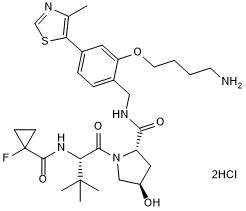
-
GC50729
VH 101 phenol-alkylC6-amine
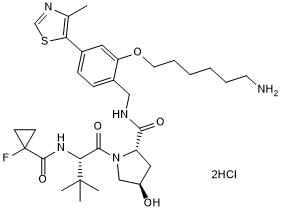
-
GC65135
VZ185
VZ185 est une sonde À double dégradeur puissante, rapide et sélective basée sur von Hippel-Lindau de BRD9 et BRD7 avec des DC50 de 4,5 et 1,8 nM, respectivement. VZ185 est cytotoxique dans les cellules EOL-1 et A-402, avec des EC50 de 3 nM et 40 nM, respectivement.
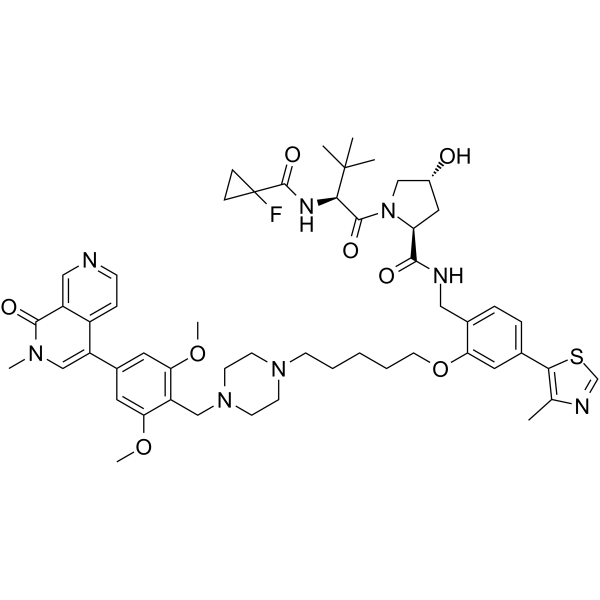
-
GC50652
xStAx-VHLL
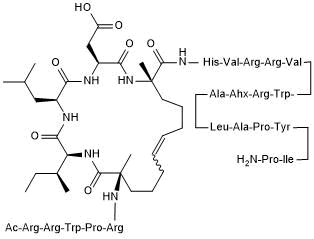
-
GC70162
YX-2-107
YX-2-107 est un PROTAC qui dégrade sélectivement CDK6 (IC50= 4,4 nM). En vitro, YX-2-107 inhibe efficacement la phosphorylation de RB et l'expression de FOXM1, ainsi que le développement d'une ALL Ph+ chez des rats. YX-2-107 peut être utilisé dans la recherche sur la leucémie lymphoblastique aiguë (ALL) à chromosome Philadelphie positif (Ph+).
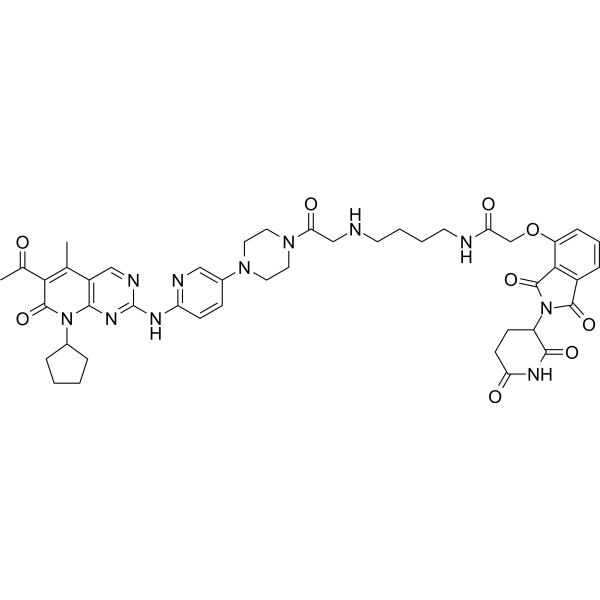
-
GC65269
ZXH-3-26
ZXH-3-26 est un PROTAC connecté par des ligands pour Cereblon et BRD4 avec un DC50/5h de 5 nM. Le DC50/5h fait référence À une dégradation semi-maximale après 5 heures de traitement de ~ 5 nM.
